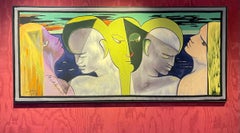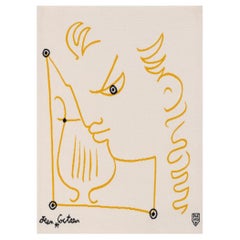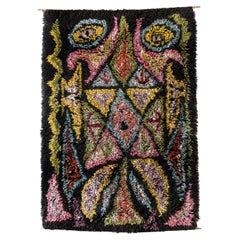Cocteau Tapestry
1950s Art Deco Figurative Prints
Tapestry
Recent Sales
Antique Late 19th Century French Modern Tapestries
Wool
Vintage 1960s Maltese Primitive Tapestries
Wool
Vintage 1960s French Tapestries
Wool
20th Century French Mid-Century Modern Drawings
Paper
1950s Art Deco Prints and Multiples
Textile, Tapestry
Vintage 1960s French Tapestries
Wool
Mid-20th Century French Tapestries
Wool
People Also Browsed
2010s South African Minimalist Pedestals
Hardwood
Vintage 1950s Danish Scandinavian Modern Sofas
Wool, Oak
Antique 19th Century English Victorian Dining Room Chairs
Other
20th Century Polish Mid-Century Modern Chairs
Fabric, Jacquard, Beech
Vintage 1940s American Art Deco Console Tables
Walnut
2010s Post-Modern Figurative Paintings
Wood, Oil
Vintage 1920s French Art Deco Glass
Glass
1950s Art Deco Portrait Prints
Ceramic
1920s Dada Figurative Sculptures
Plaster
1970s Surrealist Figurative Prints
Lithograph
1950s Surrealist Portrait Prints
Linocut
1950s American Modern Portrait Drawings and Watercolors
Ballpoint Pen
1950s Cubist Prints and Multiples
Lithograph
1890s Italian School Figurative Drawings and Watercolors
Watercolor
1890s Post-Impressionist Still-life Paintings
Oil
Cocteau Tapestry For Sale on 1stDibs
How Much is a Cocteau Tapestry?
Jean Cocteau for sale on 1stDibs
Jean Cocteau was a French painter, poet, designer, printmaker, playwright and filmmaker. He is one of the most important figures of French Surrealism, although he always denied being in any way connected to the movement.
Cocteau was born to a socially prominent Parisian family. His father, George Cocteau, was an amateur painter who committed suicide when Jean was only a child. Jean became famous in Bohemian circles as "The Frivolous Prince." In 1912, he collaborated with the Ballets Russes. After World War I, Cocteau met the poet Guillaume Apollinaire and the artist Pablo Picasso. In 1917, thanks to Sergei Diaghilev, a Russian impresario, Cocteau wrote a scenario for the ballet Parade — the set of this important ballet was realized by Pablo Picasso and the music was composed by Erik Satie. In the late 1920s, Cocteau wrote the libretto for Igor Stravinsky’s opera-oratorio Oedipus Rex. In 1918, he met the French poet Raymond Radiguet. They worked and went on many journeys together, and Cocteau promoted his friend's works in his artistic group.
Cocteau is well-known for his novel Les Enfants Terribles (1929) and the films The Blood of a Poet, Beauty and the Beast and Orpheus. During World War II, he created sets for the Théâtre de la Mode. In 1955, he was elected to the Académie Française and the Royal Academy of Science, Letters and Fine Arts of Belgium. He was commander of the Legion of Honour, a member of the Academié Mallarmé, the Academy of Arts (Berlin) and the American Academy of Arts and Sciences.
Find Jean Cocteau art today on 1stDibs.


